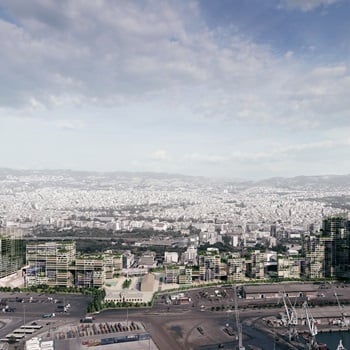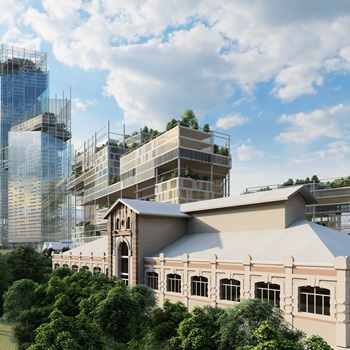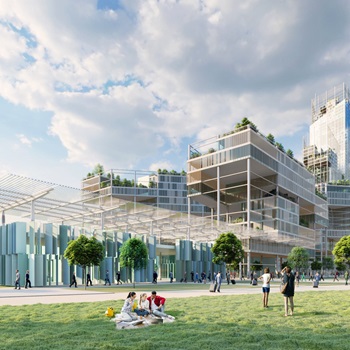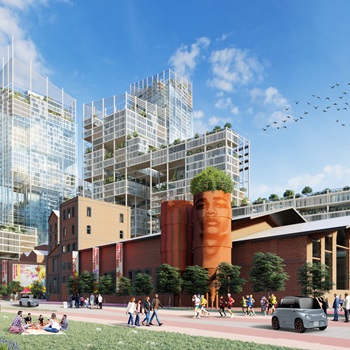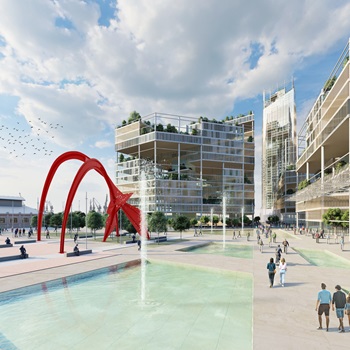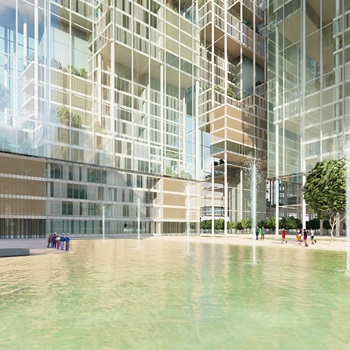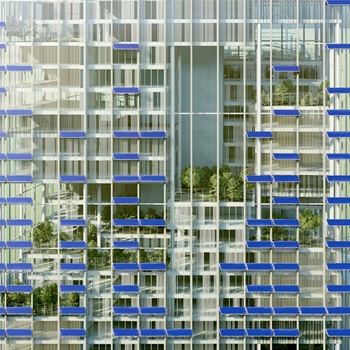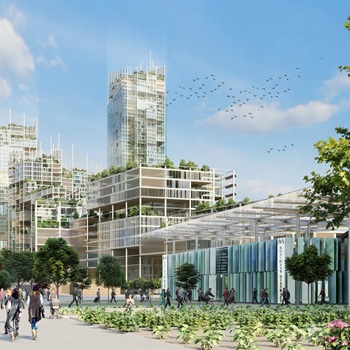
Honorable Mention: Interview with MAU ARCHITECTURE, F&M INGEGNERIA SPA & MARSIGLILAB
1) Please tell us a few words about you and what motivated you to participate in the competition of Arxellence 2. Did you ever undertake/design a similar project (CBD) in the past?
The T-WAVE team comprises over twenty designers from all walks of life from Italy, Albania, Serbia and Greece. The group comprehends specific experts in the fields of Architecture, Engineering, Landscape design, Urban design, Sustainability and Innovative technologies. The subject of the competition caught our interest for its complexity, moving across many disciplines which all had to be considered and brought together. We think this kind of urban projects, regarding both future developments and heritage safeguard, is the most important issue in nowadays architecture processes. The theme of the recovery of large urban voids, common matter of all major European cities, stopping the city to expand externally by consuming resources and territory, aims to create new urban public spaces and new centralities.
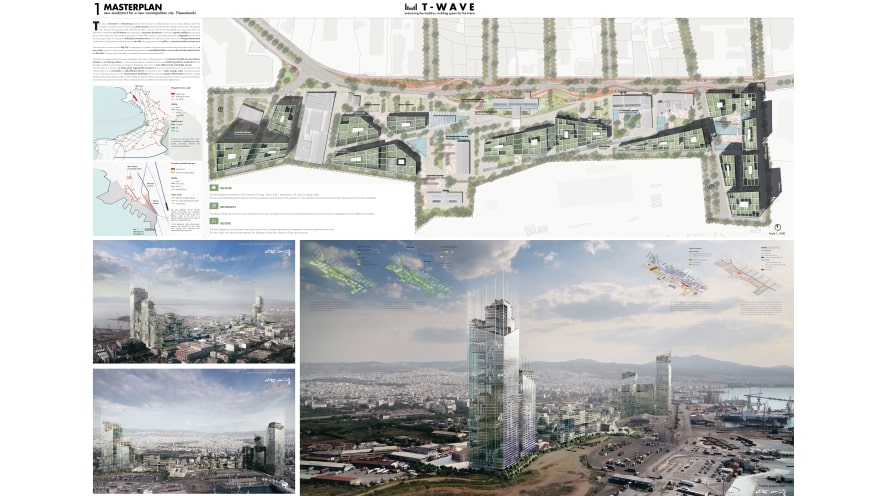
2) Could you give us a description of your proposal? How did you approach the project and what was the main idea of your design?
The idea is innovative and harmonious based on the resolution of conflicts between man and nature, between rebirth and memories, innovation and environment. Open green spaces and harmony between the buildings are main focus of the masterplan. The park and the green areas will be the elements in common, the link that holds together the various parts of the new intervention, starting from 26is Oktovriou street which becomes an important boulevard, an element of gentle mobility that reconnects the city to the project area.
This intervention proposal is a “project within a project” which implies a harmonious integration with the rest of the urban space of the city. The past and industrial commemoration must not be lost but must make use of a strong enhancement of all the historic buildings that will finally be given a new life, becoming areas for both public and private activities and services. This intervention is a new part of the Big City, an opportunity for its rebirth.
The project area reconnects an important strip of the city, it is a new center of gravity which proposes new relationships between the consolidated fabric on one side and the industrial port on the other. The new project intervention is proposed to become an infrastructural HUB. The location is strategic and becomes easily accessible by any means of transport thanks to the inclusion of public service stations, bicycle and car sharing stations. Current and future residents will benefit from the use of self-driving electric rental cars that will be made available to reach the places of interest in Thessaloniki. Less cars for a more efficient and sustainable service.
The intervention is conceived as a large urban regeneration project that favors a functional and social mix and welcomes many activities within it, in an accessible and self-sufficient district from the point of view of clean energy, water, and all urban public services. It develops along one of the central green backbones (boulevard) and a green infrastructure dedicated to gentle mobility (26is Oktovriou street). The ground floors of the buildings are characterized by commercial and public activities, by accesses to residential, sports and work spaces and numerous dehors, emphasizing total accessibility to all areas of the neighborhood.
With the concept of ‘ENERGY FOREST’ we integrate the landscaping into the overall energy efficient strategy with design techniques such as planting trees for the purpose of providing shade and reducing cooling costs, planting or building windbreaks to slow winds near buildings, to reduces heat loss, we conserve water in ponds and plants and others techniques. With the concept of ‘URBAN LOTS’ we provide ‘blank sheet’ areas, in the park at ground level as well as within the buildings, to be cultivated with plants or vegetables by the tenants further promoting contact with nature, home grown food and social interaction. Finally we provide significant landscaping elements vertically, integral to the building elevation, which are visible externally and internally.
The project involves detailed analysis of the spaces’ functionality. The analysis includes dozens of permutations of 19 different functions in 23 different buildings in the search of the most dynamic, most stimulating socially and most profitable space mix. This analysis also allows for the project to be used in other space function scenarios including a medium rise (should a high-rise development have planning difficulties) or with the functions revised in the future to allow for different functions spread. Our proposal for the project to be designed as full spectrum energy efficient (with both active and passive building measures as well as the user behavioral) aiming for the LEED Gold and aspiring to be used as a benchmark in terms of flexibility, adaptability and energy efficiency for the high-rise developments in the whole region.
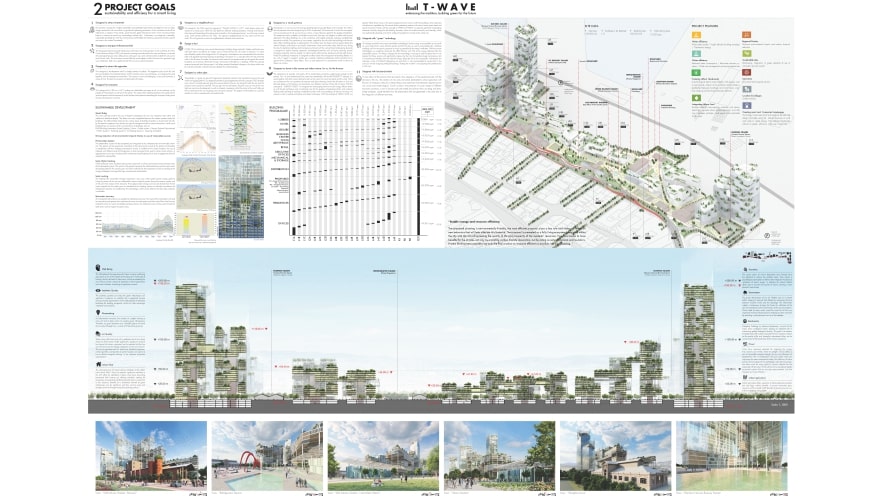
3) What do you think made your idea stand out and why? What are the experiences you gained from the competition of ArXellence 2?
We think our proposals stood out due to its complexity, while keeping a strong readability through all the scales the project involved. Therefore, the general masterplan, the mobility system, and the buildings design appear all to be coherent with each others in their language, creating an extremely various yet harmonious urban situation. The development of this competition is the result of complex work, as well as the opportunity to reflect on the most urgent issues of the urban landscape in the contemporary era.


